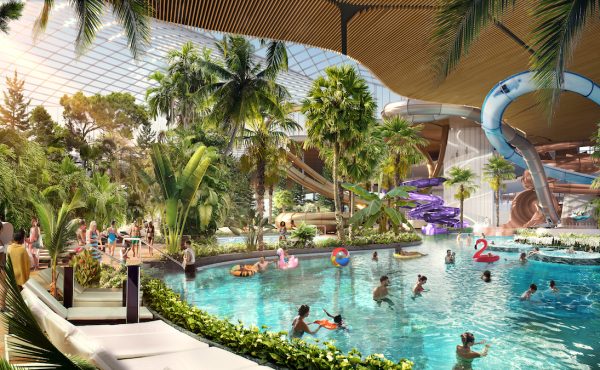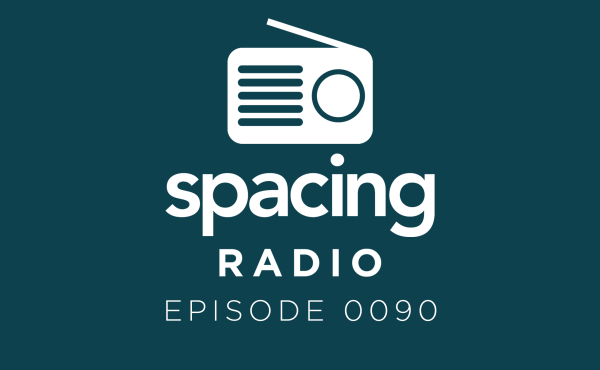

Mayor Rob Ford managed to suppress his allergy to media events on Friday by turning up to wax enthusiastic at the launch of Toronto’s four largest groundhogs — the Lovat-built boring machines that will dig the tunnels for the 8.6-km Spadina subway extension into Vaughan.
As my colleague Patrick White reported in The Globe and Mail Friday, Mr. Ford declared that “[t]he start of the tunnel boring for this subway project is an important step in building a transportation city. It will be a major, major transportation hub connecting the TTC, York Region Transit, Viva, and GO.”
A momentous occasion, true, but talk about a long wait.
The moment of conception, as best I can tell, occurred around 1988 — the mayor, then 19, was enrolled at Carleton University — when Liberal labour minister Greg Sorbara first publicly bruited the notion of extending the Spadina line to York University. A year later, in what has become an achingly familiar half-measure, Queen’s Park and the TTC announced plans to spend $160 million on a 1.6-km extension of the existing line up to Sheppard (now the Downsview megastation).
That stop, as then–TTC general manager Al Leach explained to the Toronto Star, was strategically important because it could function as a kind of three-way junction, allowing an extension north towards York U./Steeles, as well as a second connection directed eastwards along Sheppard.
Metro, you see, had concocted a transit building strategy that proposed, among other things, a subway linking Spadina to the Scarborough Town Centre.
Estimated cost: $1.3 billion. Estimated date of completion: 2011.
Oops.
The salient detail here is the time lag: a full 23 years from sound bite to ribbon-cutting. And no one’s going to ride the rocket to Vaughan for at least another four years, which brings us embarrassingly close to 30 years.
In terms of gestation, that kind of time lag isn’t in the same league as New York’s Second Avenue subway (first proposed in 1929; construction began in 2007). But it’s not difficult to predict that the completion of the long-promised Sheppard line could take another generation, thanks in part to Ford’s determination to finance it with non-existent funding.
Worth noting, too, that the two lines that did ultimately win approval — the Spadina extension and the Sheppard stubway — had very tenacious and powerful backers: Sorbara and former York University president Lorna Marsden for the former, and Mel Lastman and Paul Godfrey for the latter.
When I scan the political landscape today, I don’t see anyone comparable trumpeting the Sheppard line. Yes, the Fords have positioned the privately developed subway as a core part of their mandate. But the idea lacks prominent and outspoken cheerleaders from the other orders and the business/institutional community. Indeed, where are VIPs who were plugging away at this plan when Ford was just a yodeler from Etobicoke, and who will continue to push for it long after he’s gone? I suppose someone must want it to be built. I just don’t know whom.
A few other tidbits from the Spadina extension archives: The first Toronto council motion formally endorsing the project was moved, back in February 2005, by one Howard Moscoe, a lefty who understood a thing or two about transactional politics. (The motion passed unanimously.) Does Ford’s Sheppard scheme enjoy that kind of non-denominational backing?
Hardly.
Why? Because he’s lashed himself to a financially unattainable plan motivated more by conservative ideology than by transit economics. Even Ford supporters are beginning to question the notion of underwriting a $5 billion project with a trickle of cash from development charges and tax increment financing.
On the subject of money, the TTC timeline for the Spadina project duly notes the moments when the other orders stepped up to the plate: $670 million in the March 2006 Provincial budget; $697 million from the feds in the March 2007 budget; and another $200 million from Queen’s Park in December 2007. All those numbers, by the way, are evidence of the interestingly productive relationship between Dalton McGuinty Liberals and Stephen Harper’s Conservatives. The City of Toronto, focused on David Miller’s LRT plan, had very little to do with it.
Is there any evidence the brothers are trying to knit together a federal-Provincial deal to help fund Sheppard? Not that I can see.
What I do see, however, is that York Region powerbrokers like chair Bill Fisch and Peter Kent, a Tory cabinet minister and Thornhill MP, are continuing to shill for funds to extend the Yonge line up into Richmond Hill. Indeed, they’ve been making that case for years, with a pragmatic persistence that brings to mind Lorna Marsden’s long-slog campaign to bring the Spadina line up to York.
With Gordon Chong trying desperately to rig the math for Sheppard, and with the brothers doing precious little to build a GTA-wide political coalition for the project, who’d be surprised if the next tranche of subway funding — unveiled circa 2016 — found its way to the Yonge extension instead.
After all, it’s a safer bet for politicians looking to back the next boring project.
Photo by Neal Jennings




10 comments
It would have been a lot cheaper if this subway extension was built as a LRT. The ridership will be even lower then what Sheppard gets, especially past Steeles.
“Yes, the Fords have positioned the privately developed subway as a core part of their mandate.”
I not sure that’s true. I suspect it was only added to Ford’s platform to keep his transit strategy from being a blank page. Those of us who use the TTC all the time it seems very important but from Rob Ford’s point of view it is almost completely off the radar. He will barely notice when the whole idea quietly disappears because it is impractical.
I am surprised Ford did not take this opportunity to say: “see…we’re building subways like I told you we would”.
This is the first time I think Ford has not tried to play the electorate for fools.
The Spadina extension simply reinforces a trend to evolve a 2 line subway system (sorry, but RT and Sheppard are branches, not real lines) even more into a 2 line commuter rail system. As the TTC morphs physcially and fare-wise into a skeleton version of the RER, what exactly will take the place of actual intracity transit? Ford killed Transit City, which was the beginnings of a decent LRT grid with unlimited expansion potential… now we’re left with a subway that Torontonians increasingly cannot use/afford as the system becomes optimized for someone commuting from Vaughan or Mississauga, and nothing but buses for short trips within the 416. Bring on Bixi, I guess.
Money would have been better spent on LRT lines to serve far more riders.
I’m already gagging on the media’s repetition of Vaughan’s favoured name for the terminal station: “Vaughan Metropolitan Centre”. There’s at least two things wrong with that name, so please, at least drop the second word. Even worse, I see that awful name on that cartographic atrocity of a subway map in the picture above.
We can’t even get shovels in the ground for the East Waterfront/Cherry Street streetcar, and there’s already development going in, and its not a collection of big boxes like the station in Vaughan. Never mind the much-needed Downtown Relief Line, which is going to be especially important to actually move those extra York Region commuters if we end up with the Yonge subway extension (essentially replicating the Richmond Hill GO Train corridor as far as Langstaff). Sure, you’ll get myopic claims from the TTC that more renovations of Bloor-Yonge and automatic train control will meet any expected demand, but it’s hogwash.
Minor note:
“Mr. Ford declared that ‘[t]he start of the tunnel boring for this subway project is an important step in building a transportation city. It will be a major, major transportation hub connecting the TTC, York Region Transit, Viva, and GO.’”
YRT and Viva are one system, so mentioning both is redundant. But he could have mentioned Brampton in that boilerplate press release speech.
Anyone who thinks this subway extension is superfluous or unnecessary has never taken a ride on the 196.
@Andrew, pretty much this.
@Darwin, I could agree with you if the subway ended at Yorkdale, then continued as an LRT, but to build as an LRT from Downsview would just be repeating many of the mistakes made from the SRT. If any money could be saved, it would be by running it elevated where possible – ESPECIALLY north of Steeles where there is nothing there.
Anyways, this is why we need an NDP majority, or at least a minority government with the NDP as the official opposition. That way, we can get them to lobby for a subway between Layton and his wife Chow’s wards… 😉
The current plans are repeating the same mistake they made for the SRT.
The SRT was originally supposed to be an LRT. It is was it probably been extended by now because it would have been much cheaper to do so.
I really hope that’s not the map we’ll be seeing on our subways. While they seem to have made the effort to properly display the eastern end of BD and the SRT so that they align with stations on the Yonge line (ie having Kennedy Stn parallel to Eglinton Stn), the Spadina extension is brutal. Since when is VCC located at Islington? And what are they going to do if Yonge ever gets extended northward? Will they show it as an eastward extension through North York and into Scarborough? I think it’s time to move to line maps above the subway doors, with full system maps above the first seat next to each set of doors. That’s what 99% of all other transit systems do, and it seems to work just fine.
@Darwin, I was referring to forcing a transfer in the middle of nowhere.